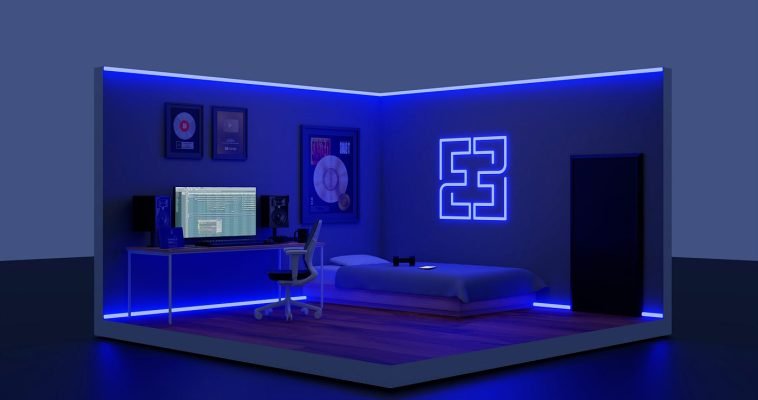Introduction.
Creating a virtual reality (VR) game is an exciting and immersive adventure that allows you to transport players into captivating and interactive virtual worlds.
With Unity, one of the leading game engines, you have the tools and resources to turn your VR game ideas into reality.
Whether you’re designing a thrilling action game, a serene exploration experience, or a mind-bending puzzle challenge, Unity provides the framework to bring your vision to life.
In this guide, we will explore the step-by-step process of creating a VR game on Unity, from setting up the development environment to designing interactive gameplay mechanics, optimizing performance, and deploying the game to VR platforms.
So, put on your VR headset and get ready to dive into the exciting realm of VR game development with Unity!
How Do I Create a VR Game on Unity?
With Unity, one of the leading game engines, you have the power to bring your VR game ideas to life and provide players with unique and unforgettable experiences.
In this article, we will guide you through the step-by-step process of creating a VR game on Unity, from setting up the development environment to designing interactive gameplay mechanics, optimizing performance, and deploying the game to VR platforms.
So, put on your VR headset and get ready to embark on an exciting journey of VR game development with Unity!
Step 1: Set Up the Development Environment.
To start creating your VR game in Unity, you’ll need to set up the development environment. Ensure that you have the latest version of Unity installed on your computer. Unity supports various VR platforms, such as Oculus Rift, HTC Vive, or Windows Mixed Reality.
Install the necessary VR software development kits (SDKs) and Unity packages specific to your target VR platform. Set up the Unity project with the appropriate settings for VR development.
Step 2: Design the Gameplay and Mechanics.
Designing the gameplay and mechanics is a crucial step in creating a compelling VR experience. Consider the unique capabilities of VR, such as head tracking and motion controllers, and how they can enhance player immersion. Determine the core mechanics, interactions, and objectives of your VR game.
Plan the game flow, levels, and challenges specifically tailored for the VR environment. Pay attention to player comfort and avoid motion sickness by designing smooth and intuitive movement mechanics.
Step 3: Implement VR Interactions.
In Unity, utilize the VR SDKs and Unity’s VR tools to implement VR interactions in your game. Use the SDK-specific APIs and Unity’s input system to handle VR input, such as head tracking, hand tracking, and controller input.
Implement interactive elements, such as object grabbing, throwing, and manipulation, to allow players to interact with the virtual environment.
Consider implementing teleportation or smooth locomotion mechanics to enable player movement within the game world.
Step 4: Create Immersive Environments.
Design visually stunning and immersive environments for your VR game. Utilize Unity’s powerful graphics capabilities to create detailed 3D models, textures, and visual effects.
Pay attention to lighting, shadows, and post-processing effects to enhance the realism and atmosphere of your virtual world.
Experiment with sound design and spatial audio to create an immersive audio experience that complements the visuals and enhances player immersion.
Step 5: Optimize Performance for VR.
Optimizing performance is crucial for providing a smooth and comfortable VR experience. VR places higher demands on hardware compared to traditional games.
Optimize your game by reducing the number of draw calls, optimizing shaders, and using occlusion culling techniques.
Consider performance-oriented design choices, such as level of detail (LOD) systems and efficient resource management.
Regularly test your game on the target VR platform to ensure it maintains a stable frame rate and doesn’t cause discomfort to players.
Step 6: Test and Iterate.
Thoroughly playtest your VR game to ensure it meets your expectations. Test on different VR devices to ensure compatibility and optimize the experience for each platform.
Pay attention to user feedback and iterate on your game design and mechanics. Fine-tune the gameplay, visuals, and user interface to create an immersive and enjoyable VR experience.
Step 7: Publish and Share Your VR Game.
Once your VR game is polished and tested, it’s time to publish and share it with the world. Distribute your game through the appropriate channels, such as VR app stores or online platforms.
Consider submitting your game to VR-specific events, competitions, or showcases to gain visibility. Engage with your community, gather feedback, and provide support for your players.
Conclusion.
Creating a VR game on Unity opens up a world of possibilities to create immersive and interactive experiences.
By following the steps outlined in this article, you can set up the development environment, design captivating gameplay mechanics, optimize performance, and deploy your game to VR platforms.
Remember to pay attention to player comfort, iterate based on feedback, and continuously refine your game to create a compelling and enjoyable VR experience.
So, put on your VR headset, unleash your creativity, and start creating your own VR masterpiece with Unity!






GIPHY App Key not set. Please check settings